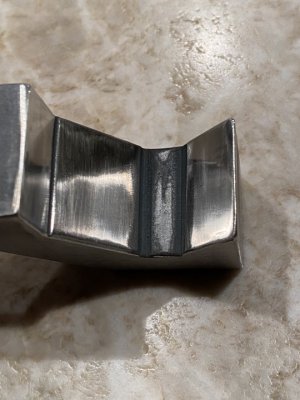- Joined
- Jul 29, 2014
- Messages
- 2,859
The Takisawa has a adjustable feed clutch, as did my Logan. If I had it set to what felt like a tolerable impact against a stop, a heavy cut could stall out the feed. When adjusted up for the cut issue, it just seemed too careless to let brute force overpower the clutch.
Is it normal practice to use a stop against power feed? I have not seen this indicated in a manual as an operating tip.
Is it normal practice to use a stop against power feed? I have not seen this indicated in a manual as an operating tip.

